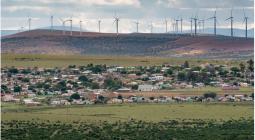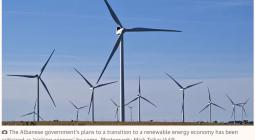‘Reconductoring’ Could Boost Grid Capacity at a Fraction the Cost of New Power Lines

Upgrading power lines with advanced conductors could double transmission capacity for a fraction of the cost of building new lines, and experts say the same technique could work in Canada if the country had better east-west grid connections.
“On a cost- and time-adjusted basis, reconductoring with advanced conductors offers the most feasible path to up to double transmission capacity along existing transmission corridors,” finds a recent report by the University of California, Berkeley’s GridLab.
“The combination of speed and capacity gains afforded by reconductoring with advanced conductors makes it a particularly advantageous strategy to increase transmission capacity in the near term, compared to other options,” the report adds.
Those results are specific to the U.S., Mark Winfield, professor of environmental and urban change at York University, told The Energy Mix. “In Canada’s case, the problem is also that a lot of the existing interregional interties and corridors are north-south, so we don’t necessarily have corridors where we need them.”
“But certainly, adding transmission capacity along existing corridors with high levels of flexibility would be helpful for integrating distributed—and potentially intermittent—resources like wind and solar, and balancing them with energy storage and demand response capacities.”
(Mark Winfield is a member of the community sounding board for The Energy Mix’s Heat & Power edition.)
In the U.S., the clean energy transition has been slowed by various regulatory and infrastructure hurdles, not least of which is the cost of building infrastructure to add grid capacity for new energy sources, say the Berkeley authors. Among the possible low-cost, high-return technology solutions is reconductoring, or replacing existing power lines with newer materials that can carry almost double the current as the previous.
But so far, reconductoring has been impeded by the U.S.’ fragmented transmission planning process, the risk aversion of utilities, and a system of incentives for utilities to build new infrastructure to generate higher returns from capital investments, the authors add.
“The biggest barrier is that the industry and regulators are still caught in a short-term, reactive mindset,” said Casey Baker, a senior program manager at GridLab. “But now we’re in an era where we need the grid to grow very quickly, and our existing processes haven’t caught up with that reality.”
That’s not to say that reconductoring has been completely neglected in the U.S., where the Lower Rio Grande Valley (LRGV) reconductoring project in southeastern Texas was the longest in the world when it was completed in 2016.
To understand the barriers holding back broader adoption of reconductoring, and consider its impact on the energy transition, GridLab assessed how the technique would boost the grid’s ability to bring new projects online in the short term. Compared to other grid technologies, reconductoring proved to be the most effective and cost-efficient, where “transmission owners can up to double the capacity of existing lines by swapping out conventional aluminum conductor steel reinforced (ACSR) cables with a variety of advanced conductor technologies.”
The report also shows that, compared to newly-built lines, reconductoring can enable nearly four times the interzonal transmission capacity expansion.
“We were pretty astonished by how big an increase in capacity you can get by reconductoring,” Amol Phadke, a senior scientist at UC Berkeley, told the New York Times.
Even though advanced conductors cost two to three times as much as conventional ones, the process is still 50% to 75% cheaper than achieving a similar capacity increase with new transmission lines.
The boost from advanced conductors could be critical to moving the U.S. energy transition forward, the report concludes, especially as billions of funding dollars from the 2022 Inflation Reduction Act create an influx of new solar and wind projects currently stuck in the slog of regulation and permitting to connect to an overburdened grid.
Countries like the Netherlands and Belgium have used reconductoring to bring new projects online, the report states. But questions remain about how broadly it can be applied in the U.S., beginning with how many wind and solar projects can be built close to existing lines.
In Canada, too, advanced conductors could help increase capacity, Winfield said. They could be allow larger, more dynamic energy flows across different regions, and help facilitate distributed energy resources (DERs) and microgrid development.
But he added that the current structure of Canada’s grid makes reconductoring less useful in the short term—until provincial systems become more connected across provinces from east to west.





